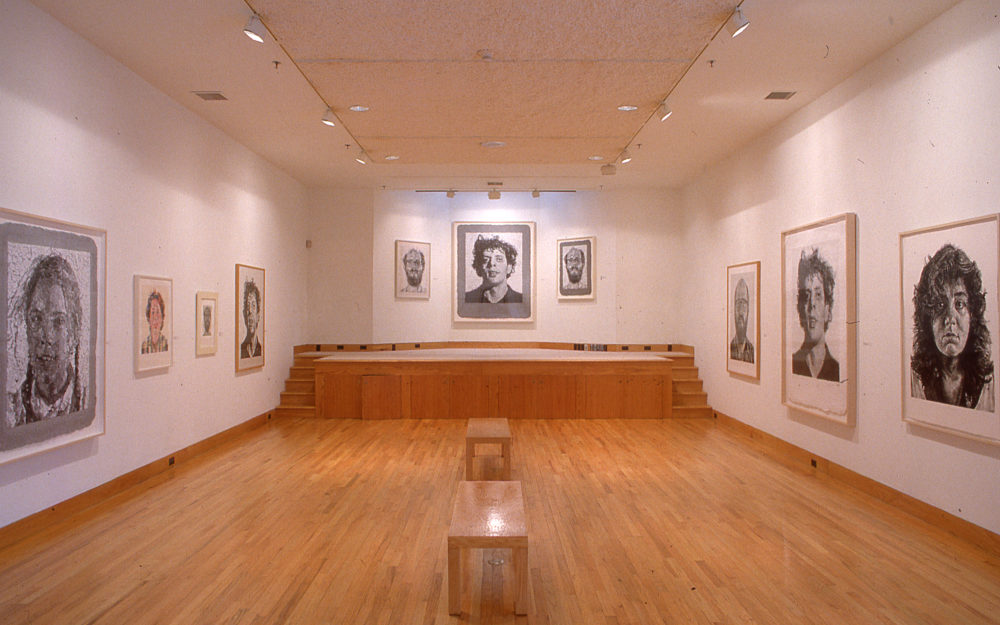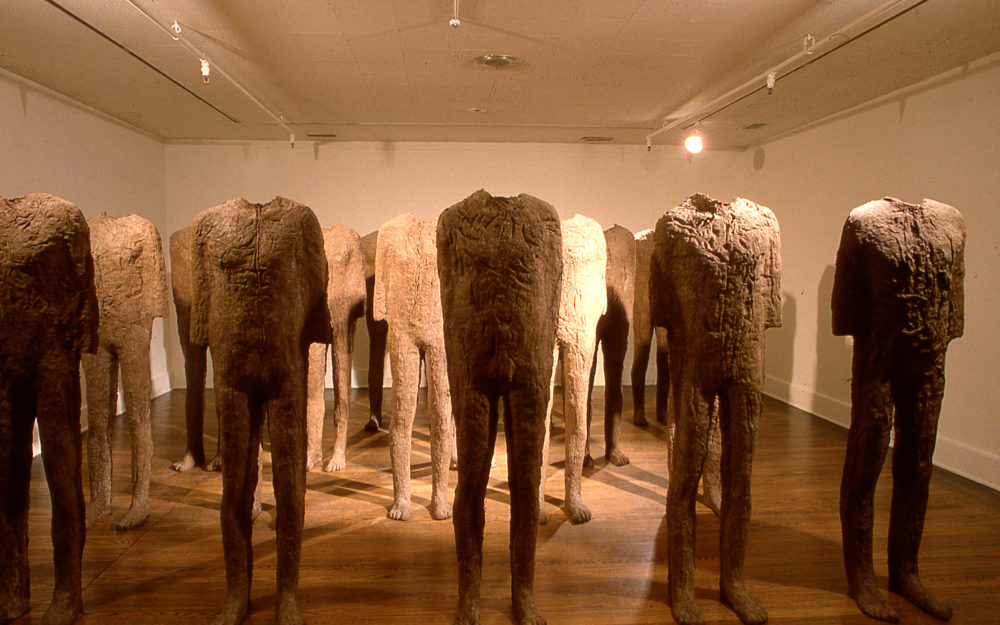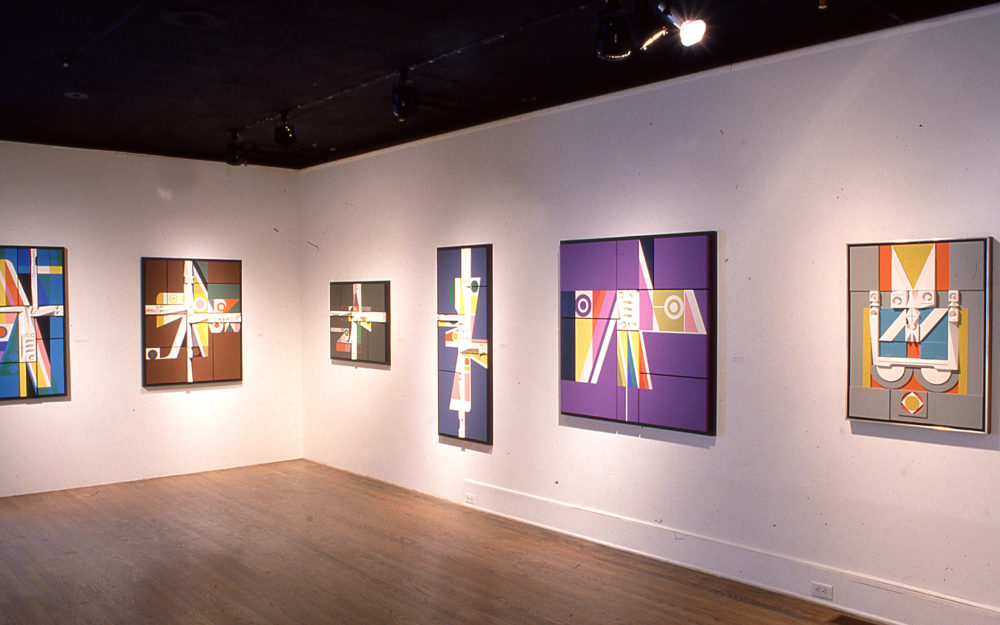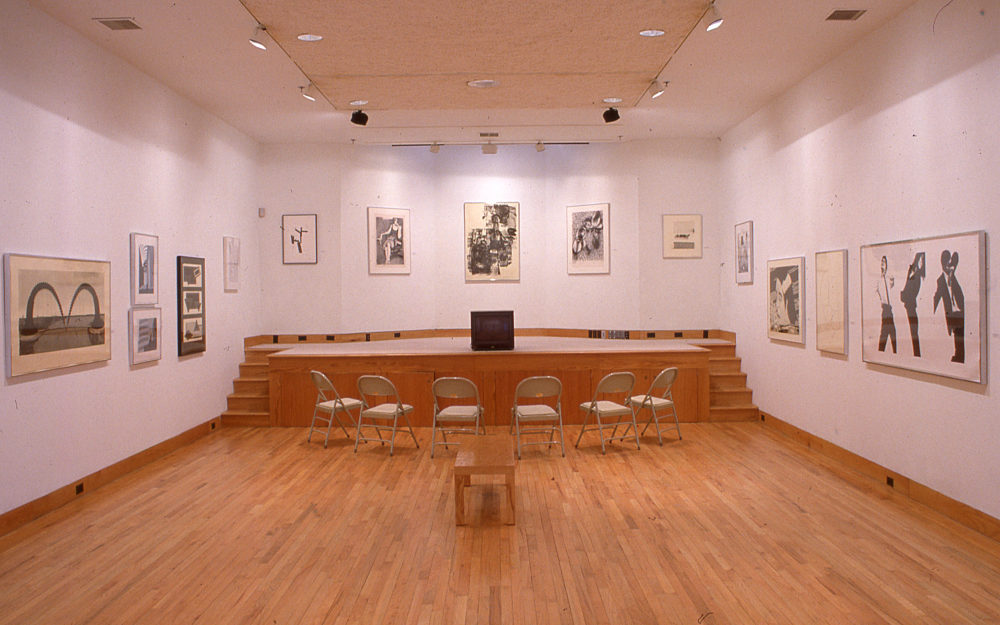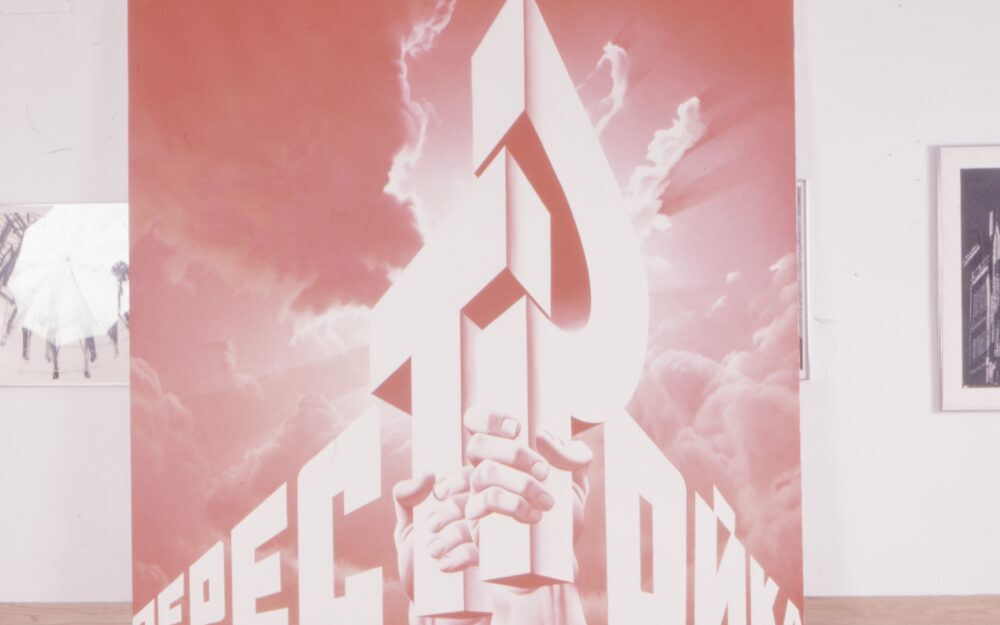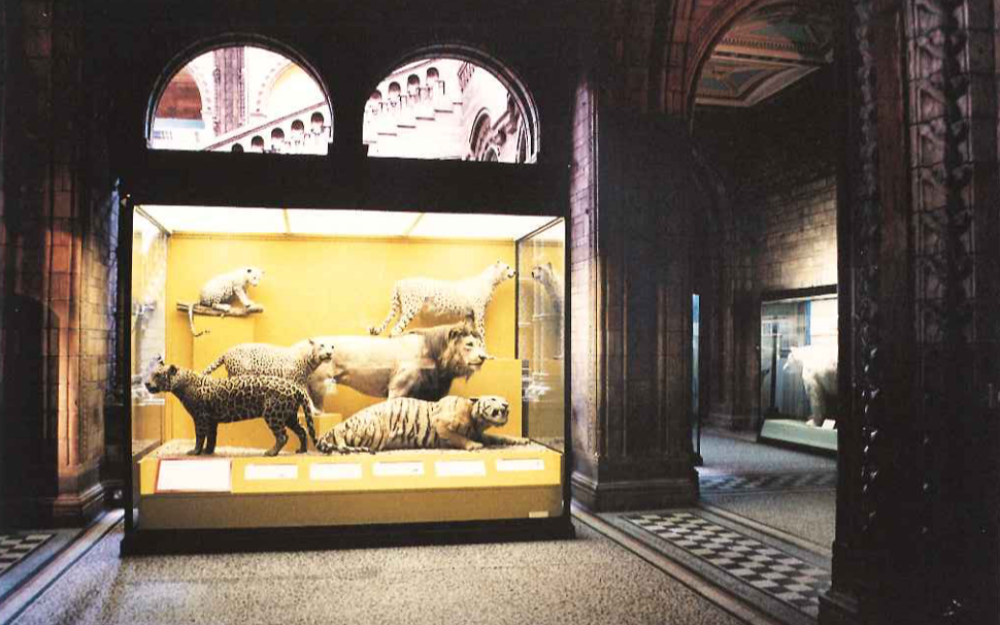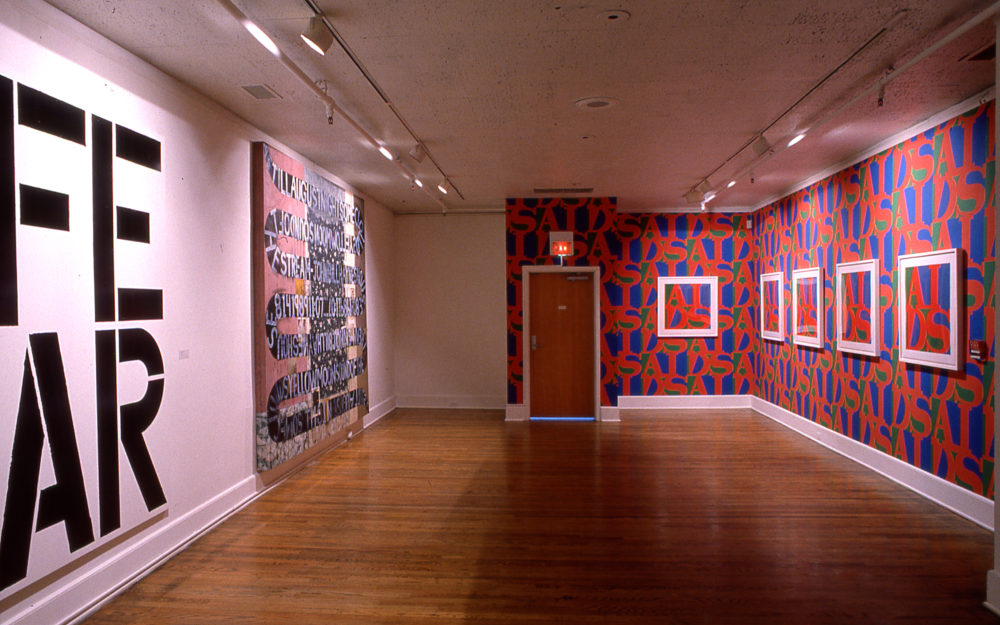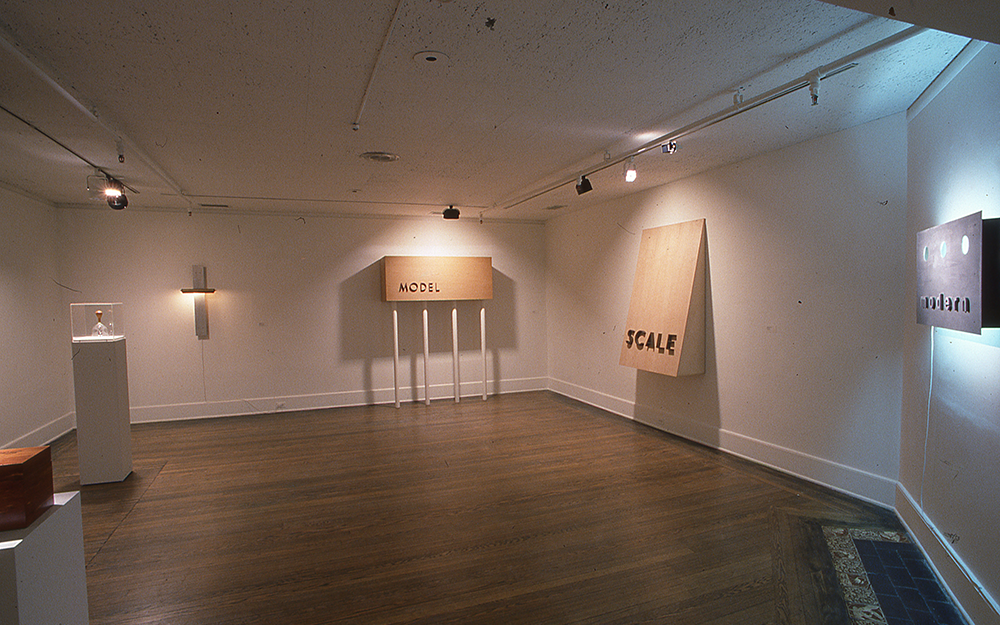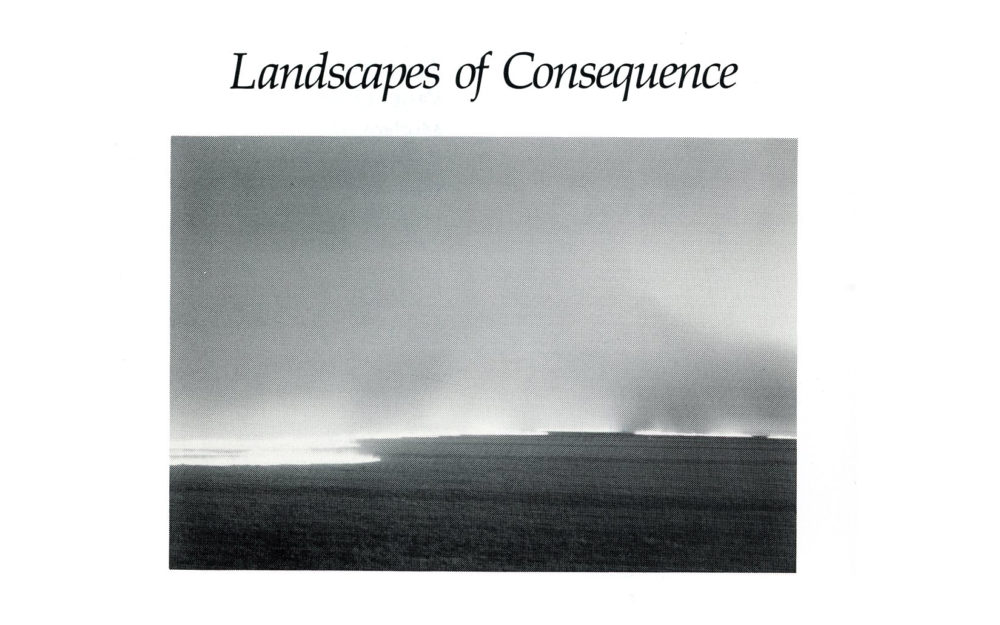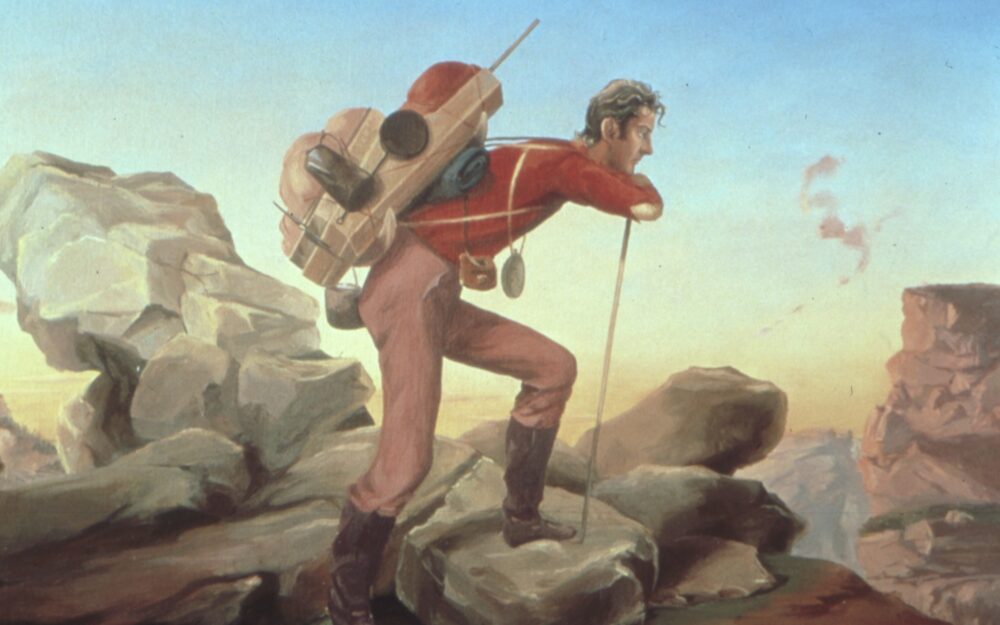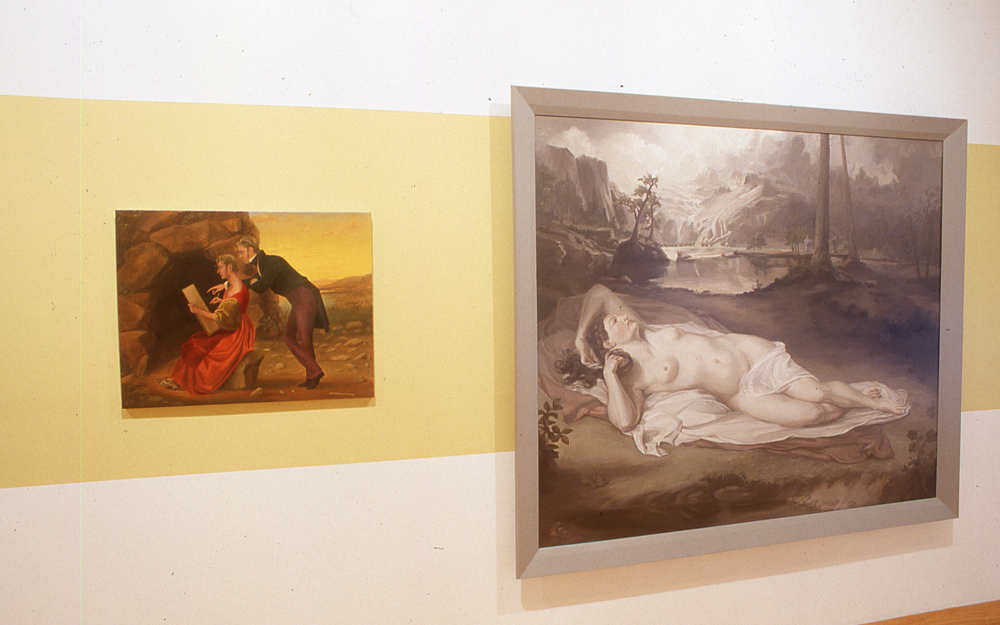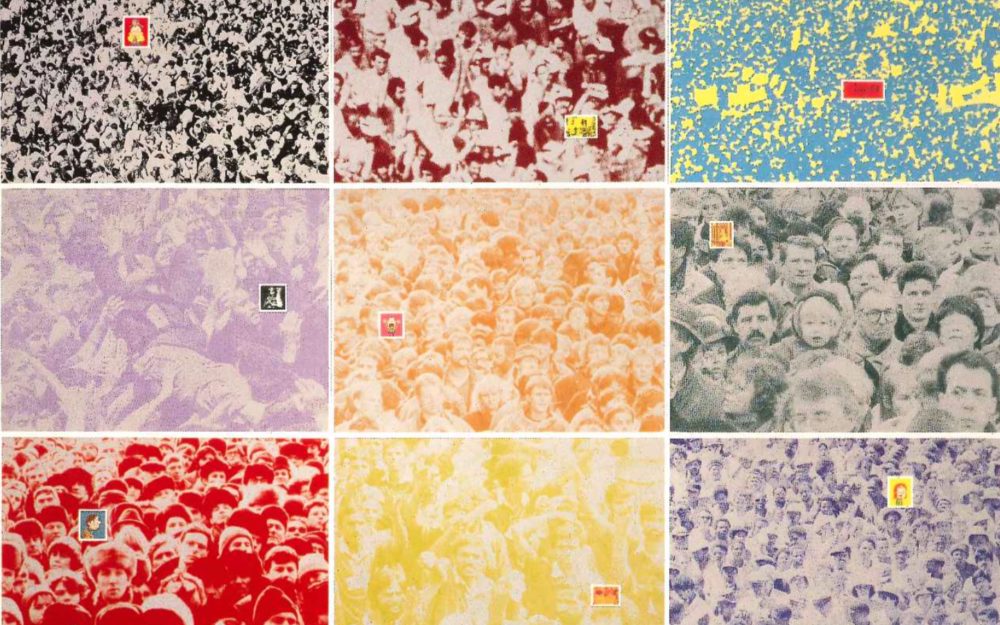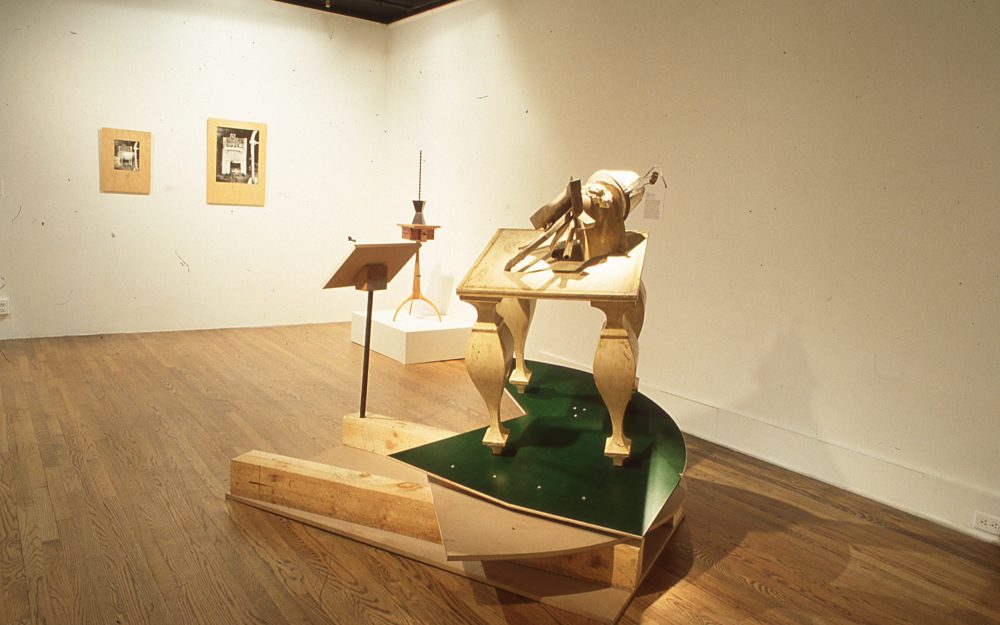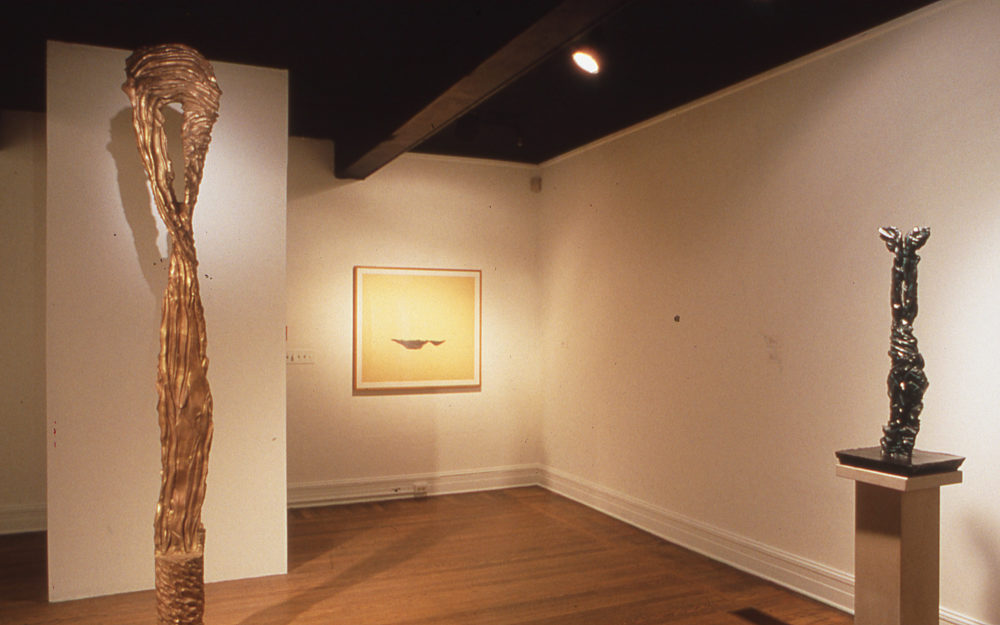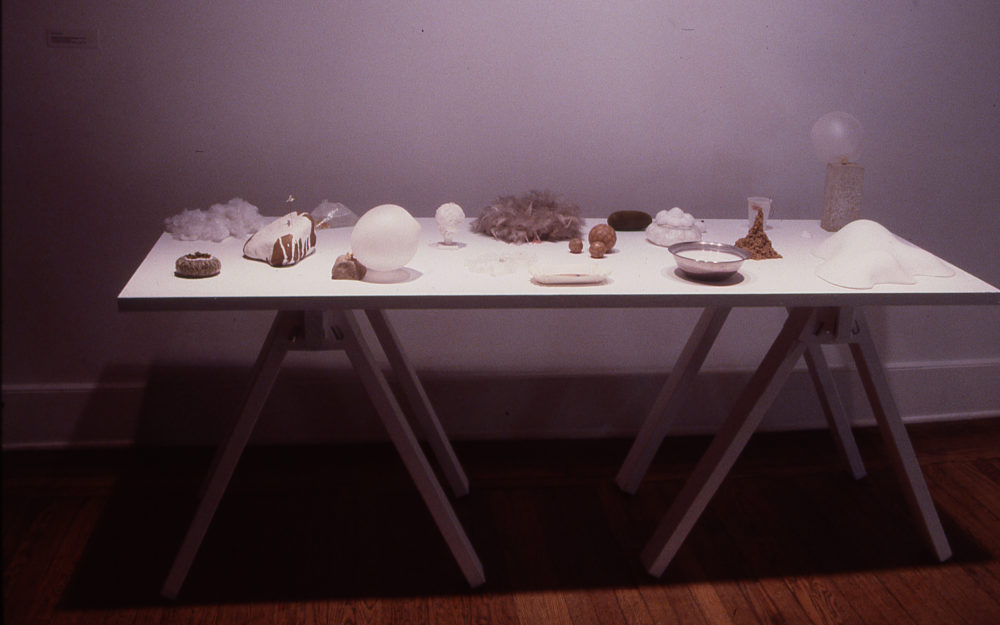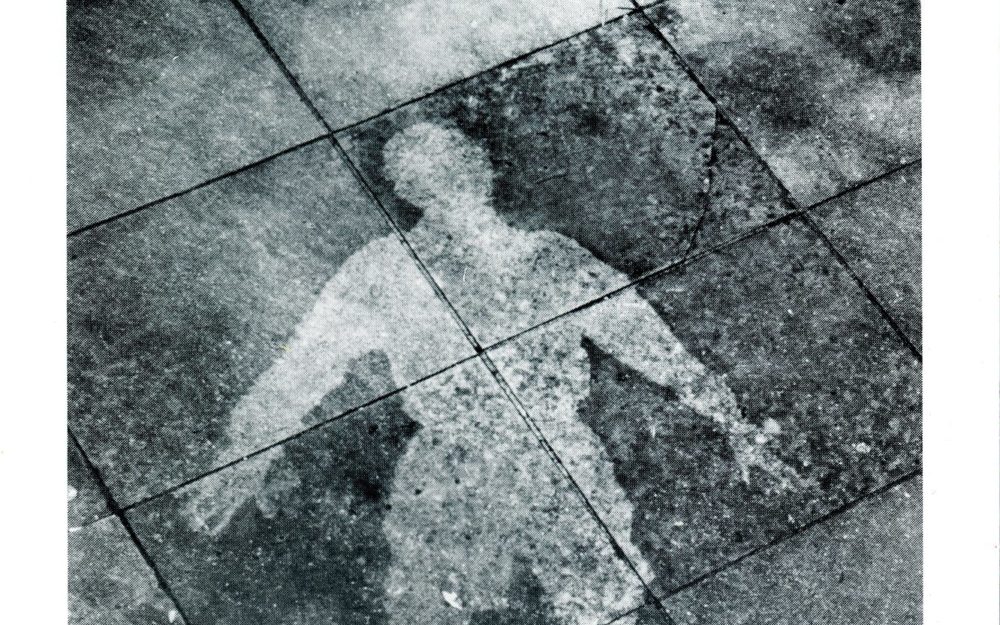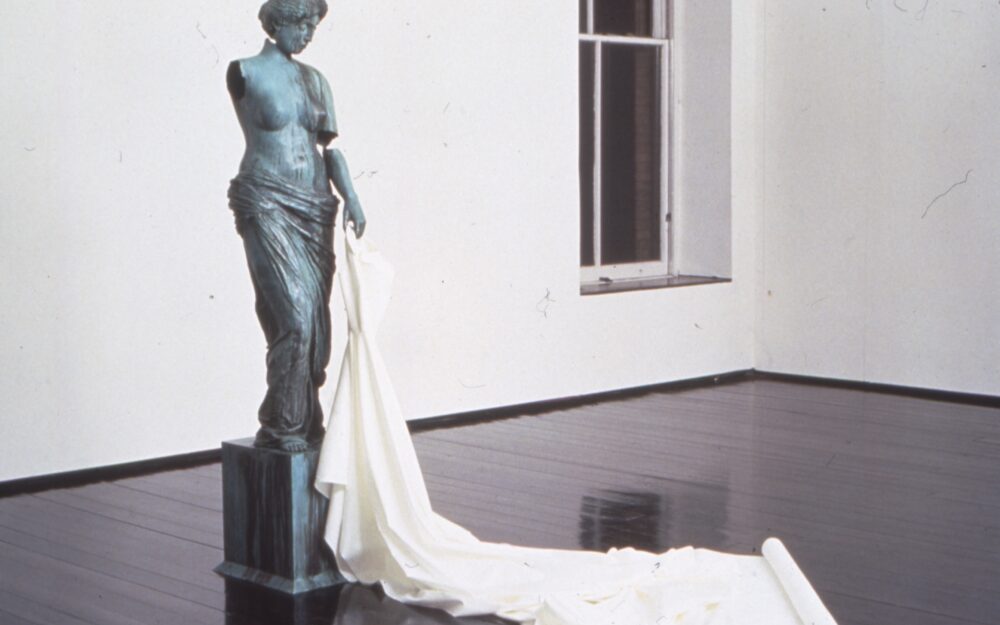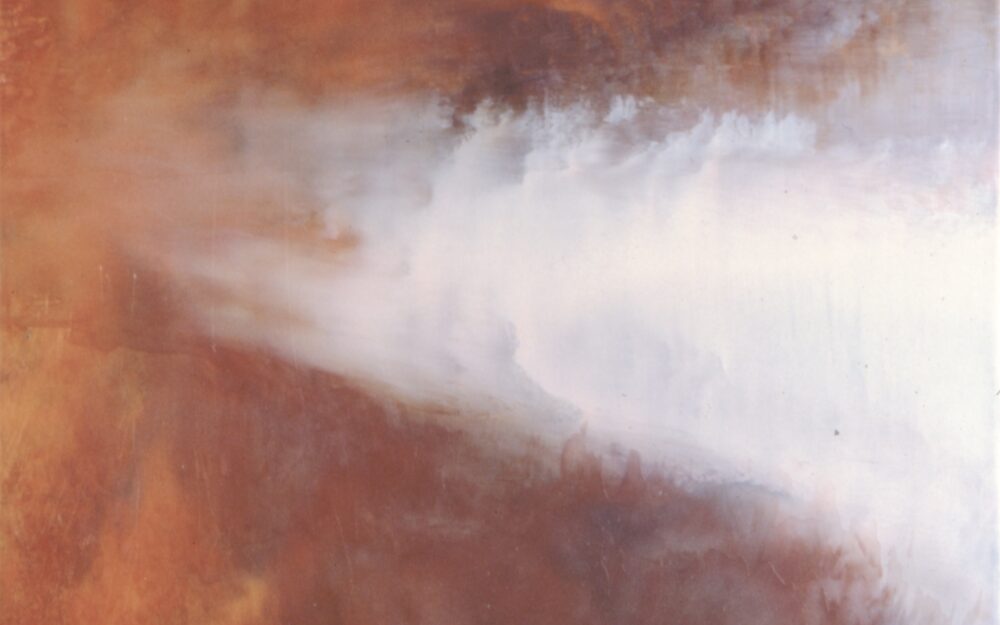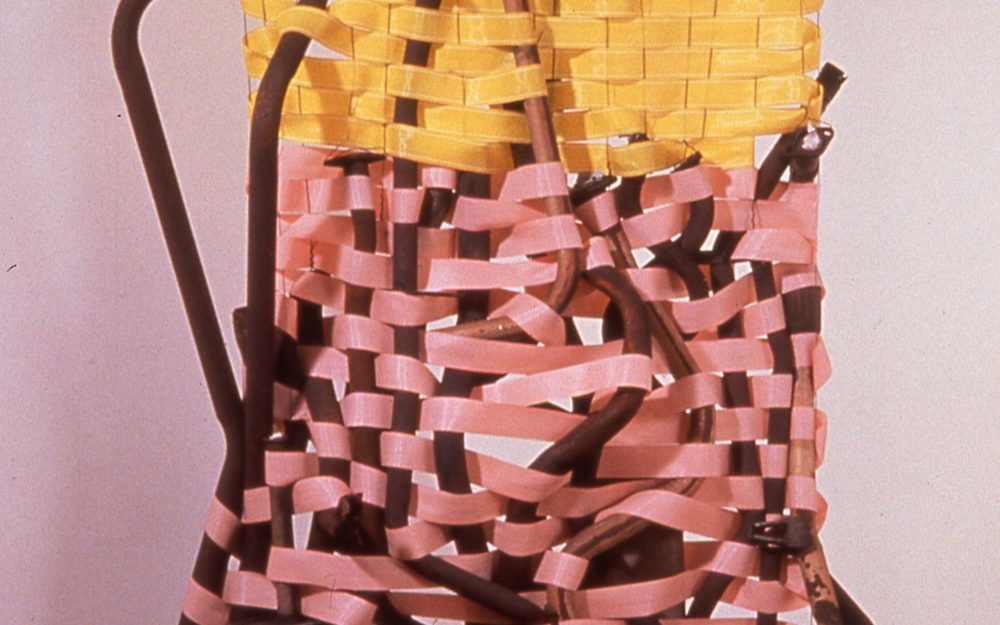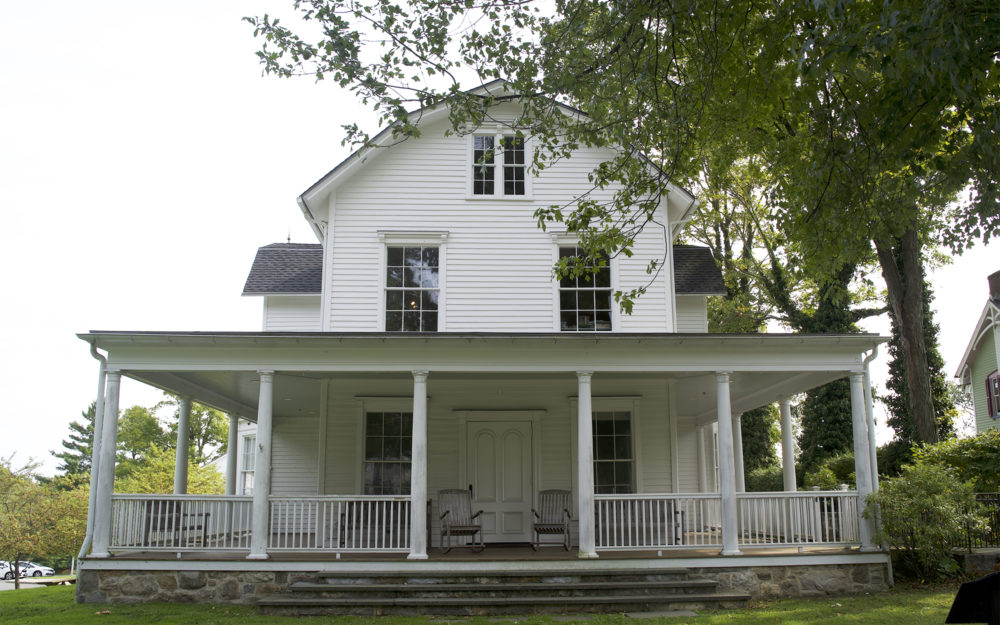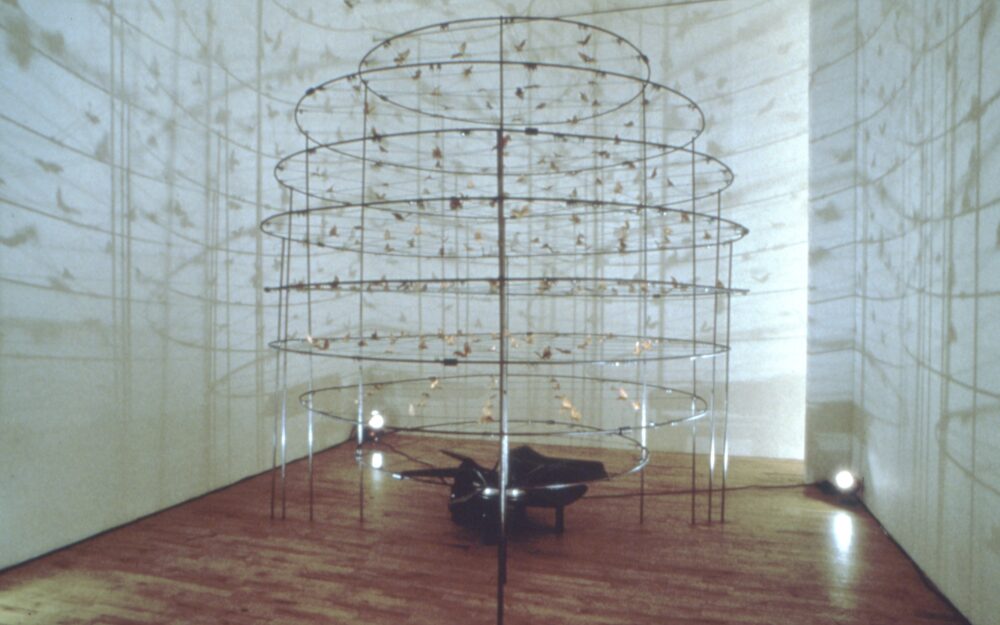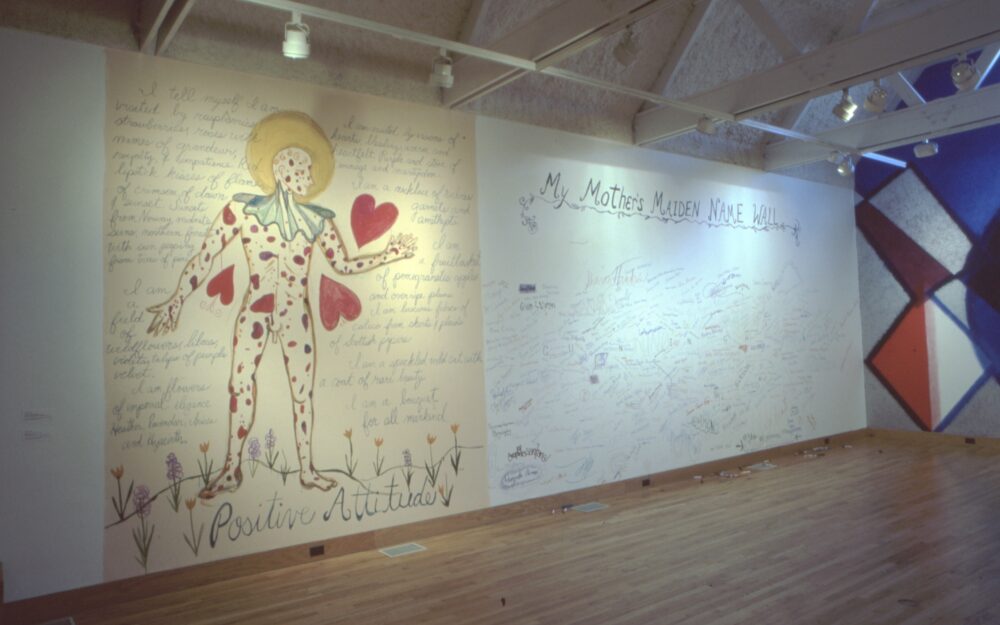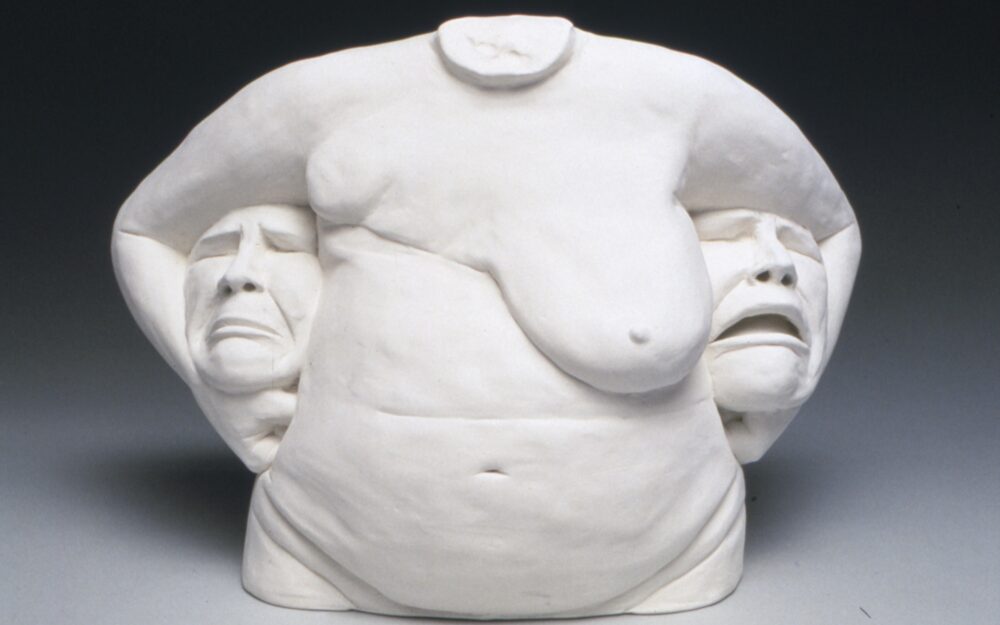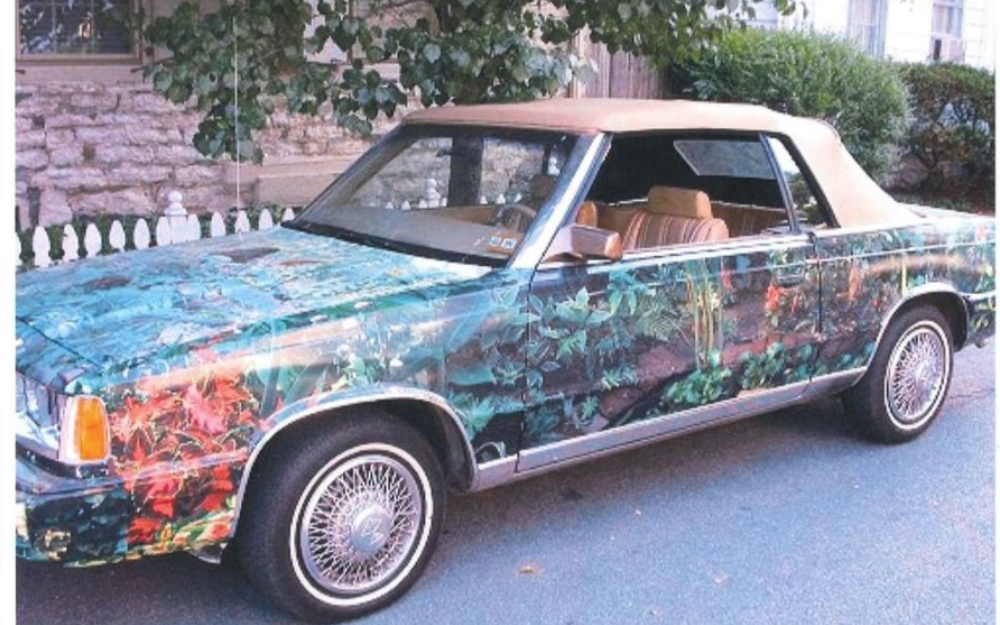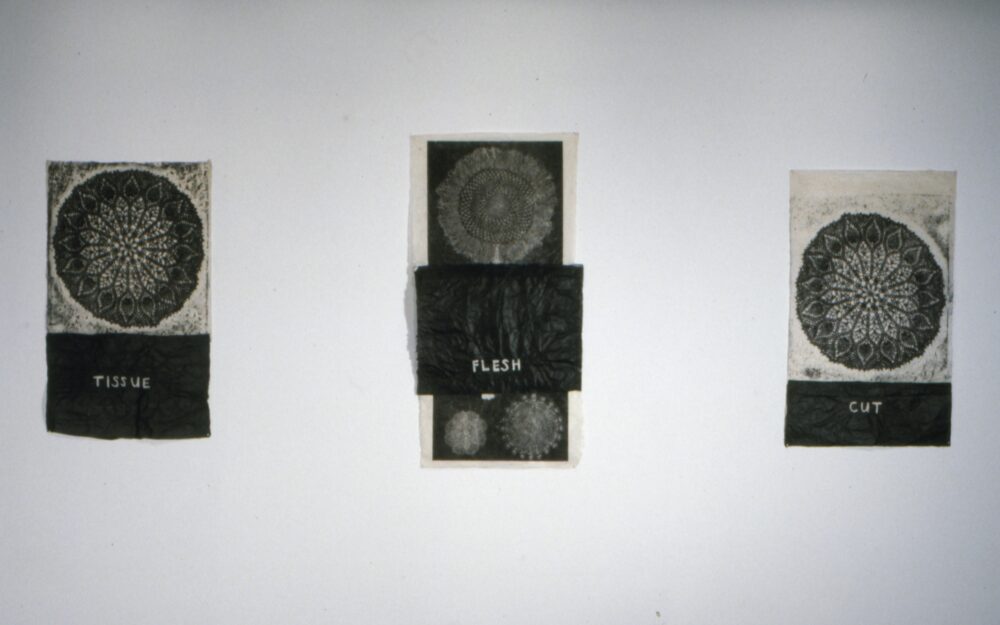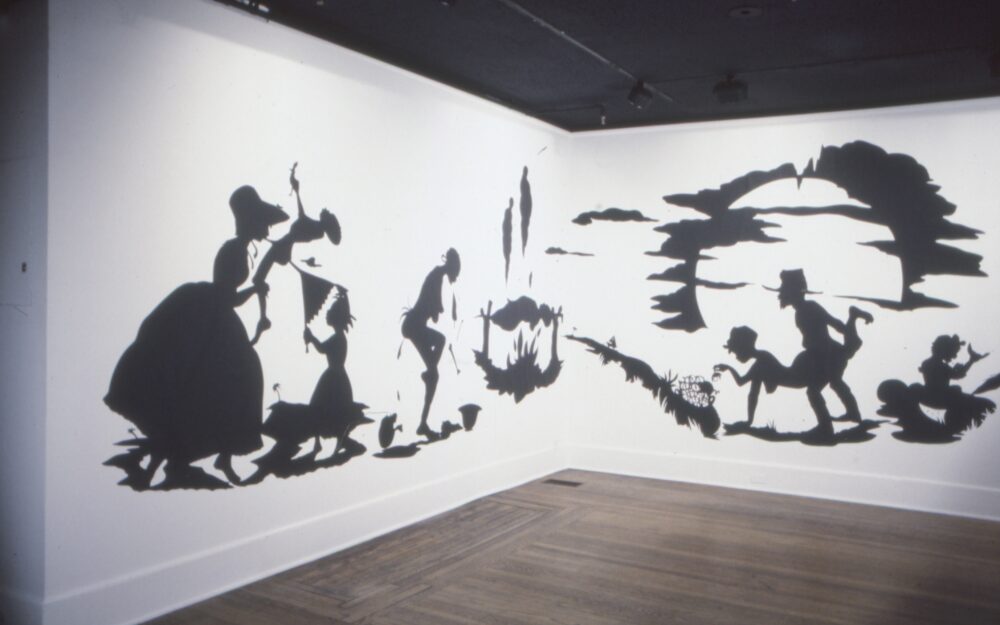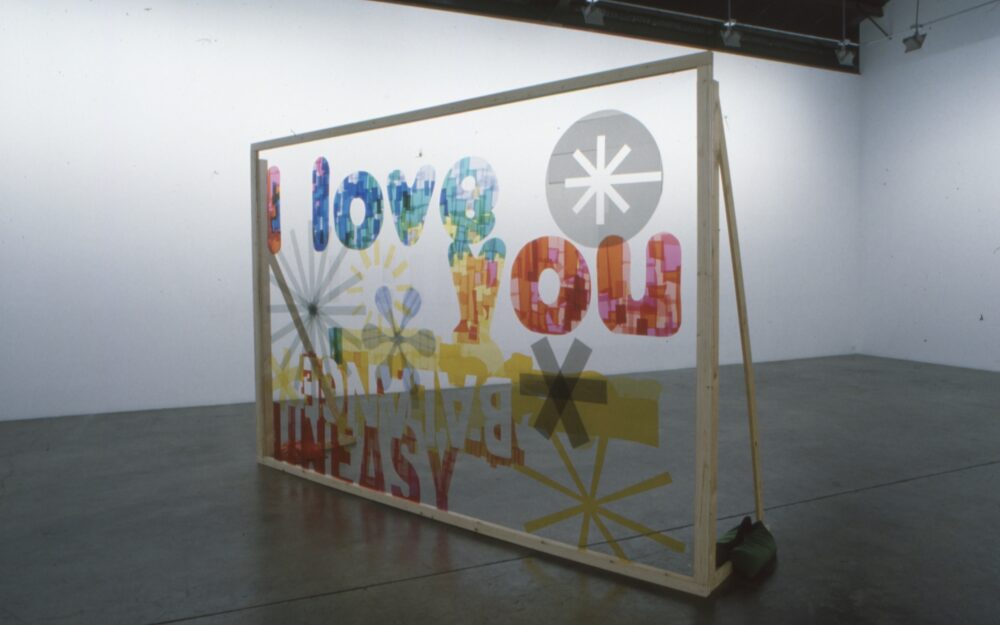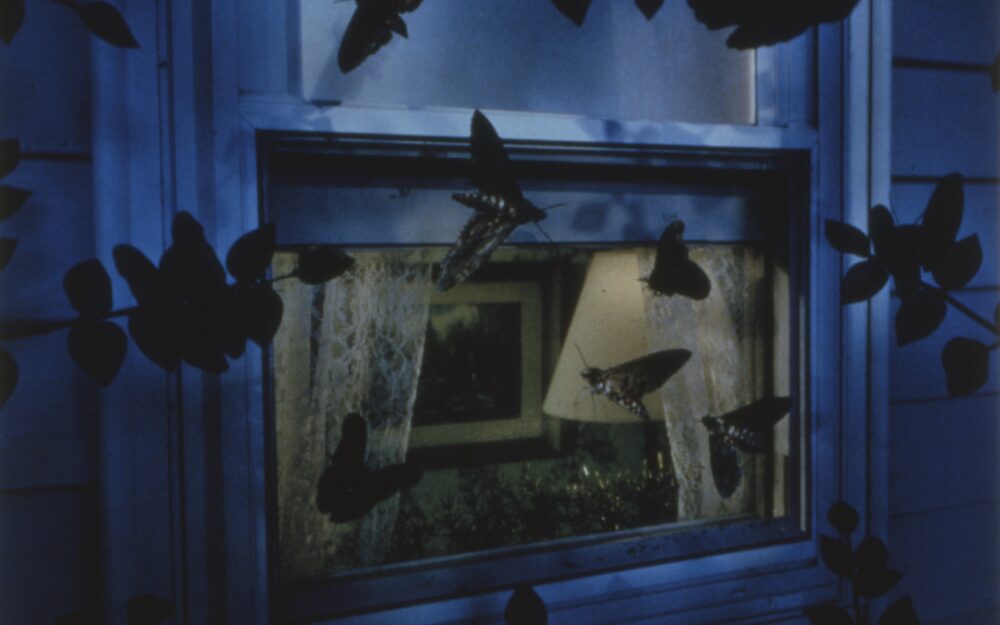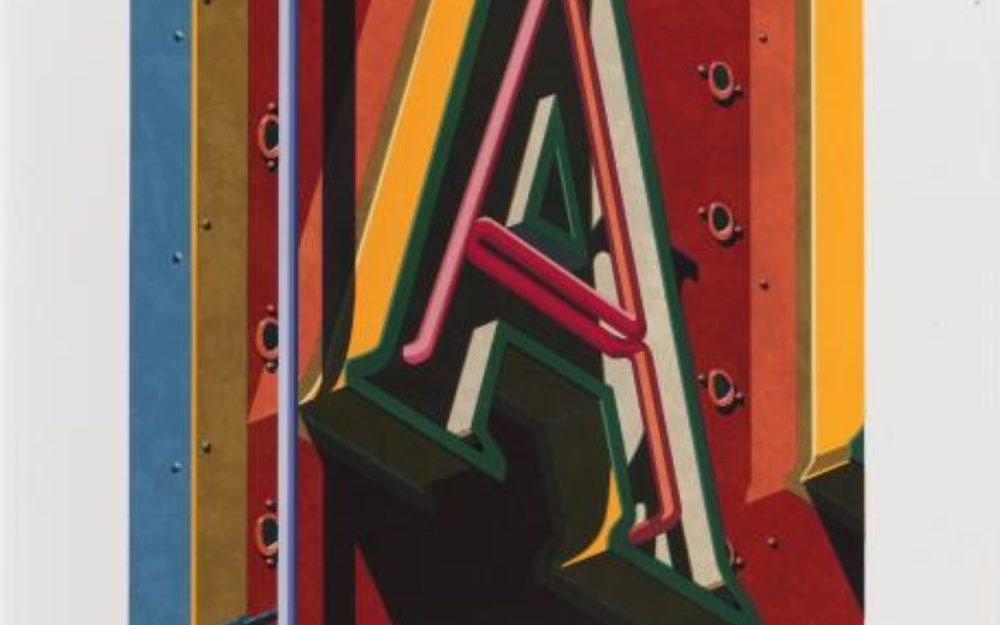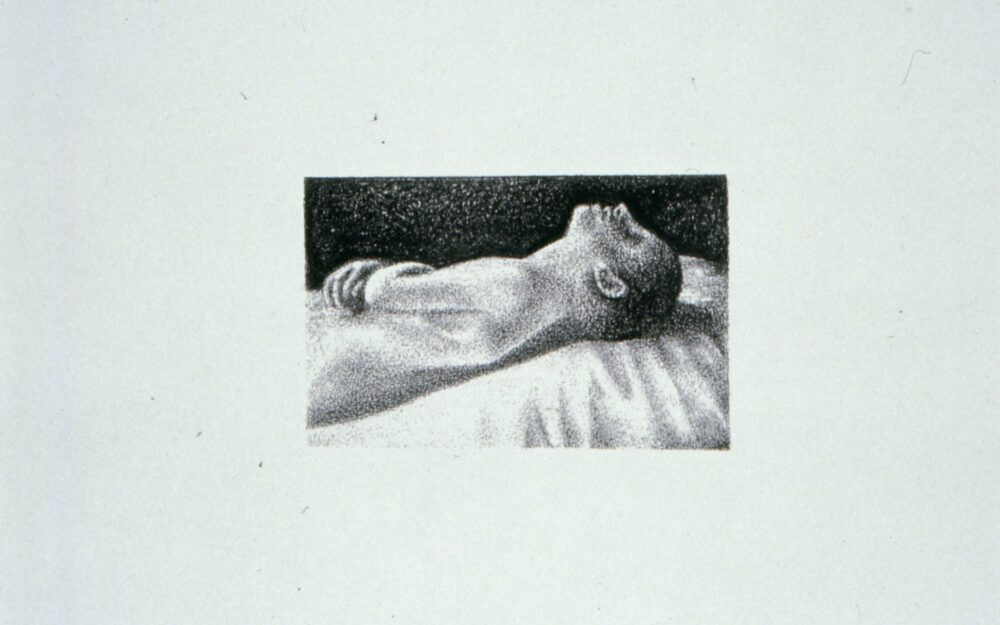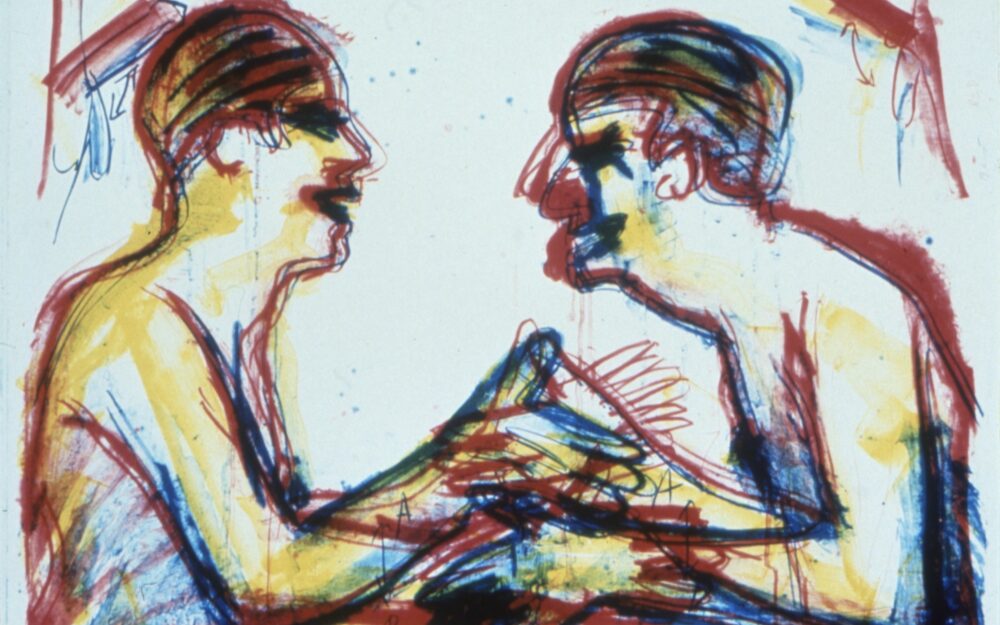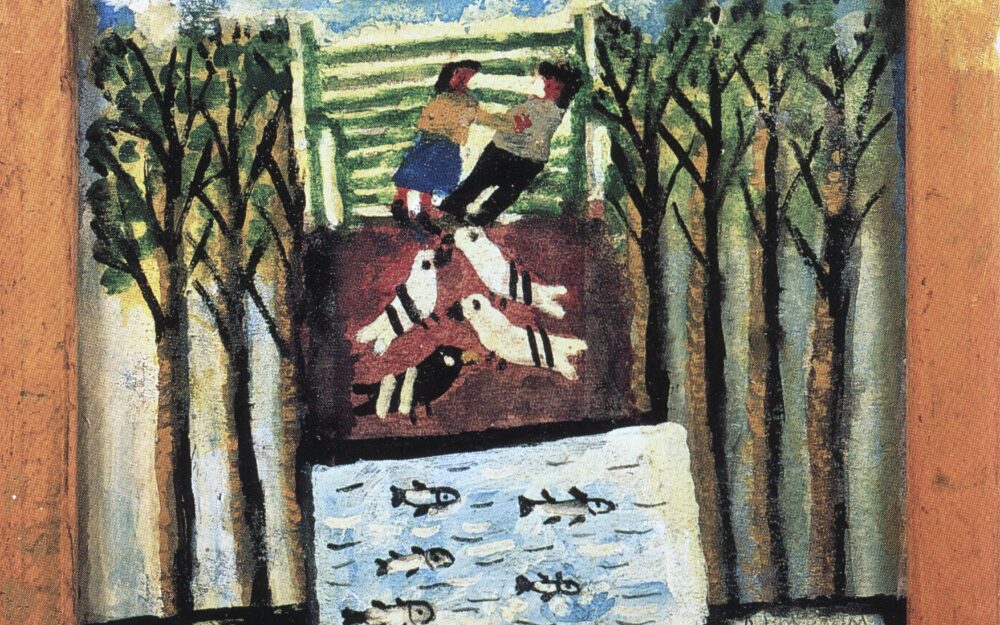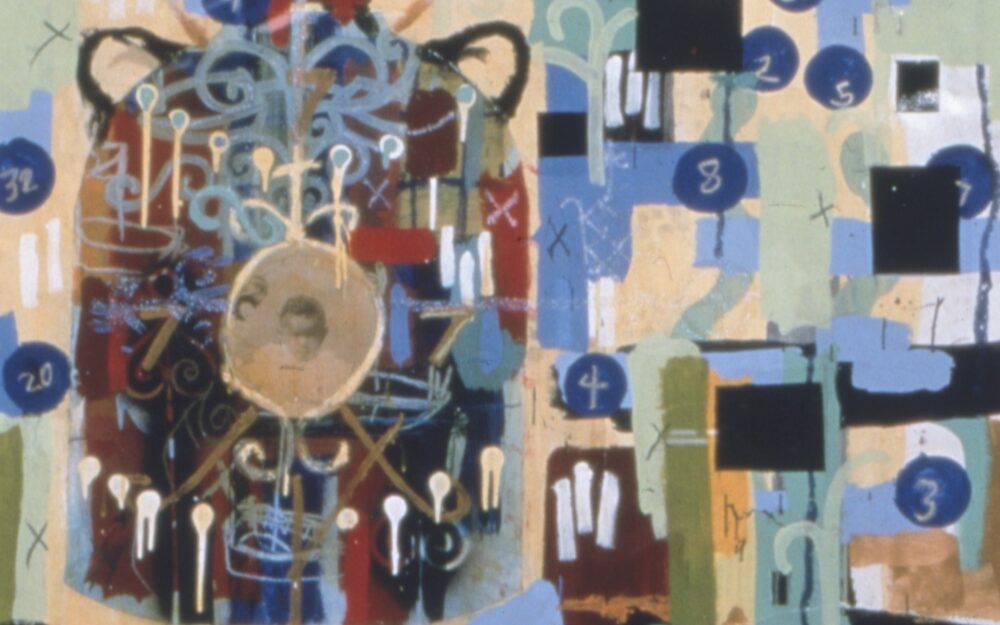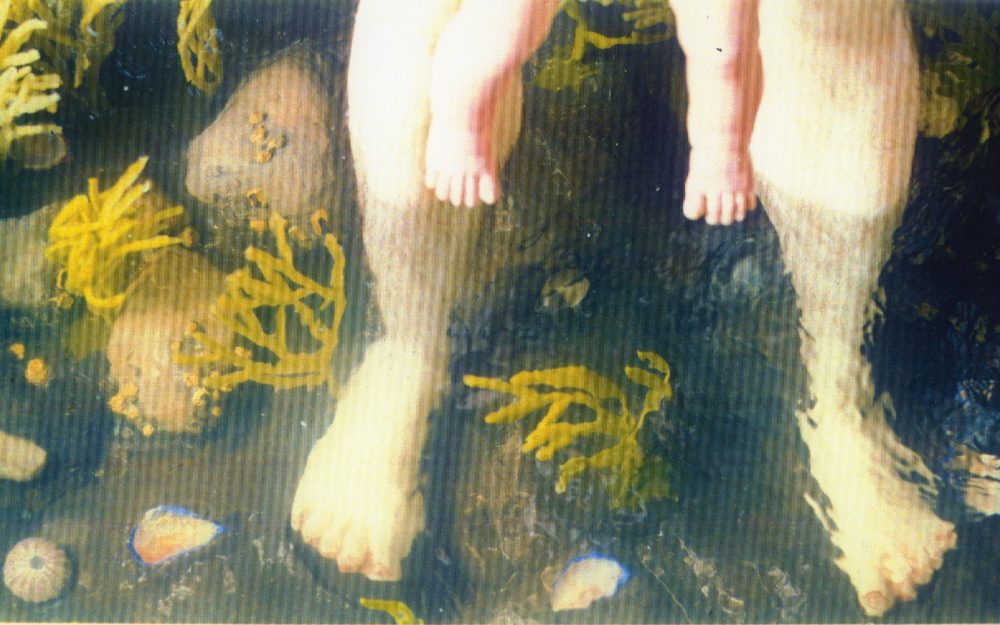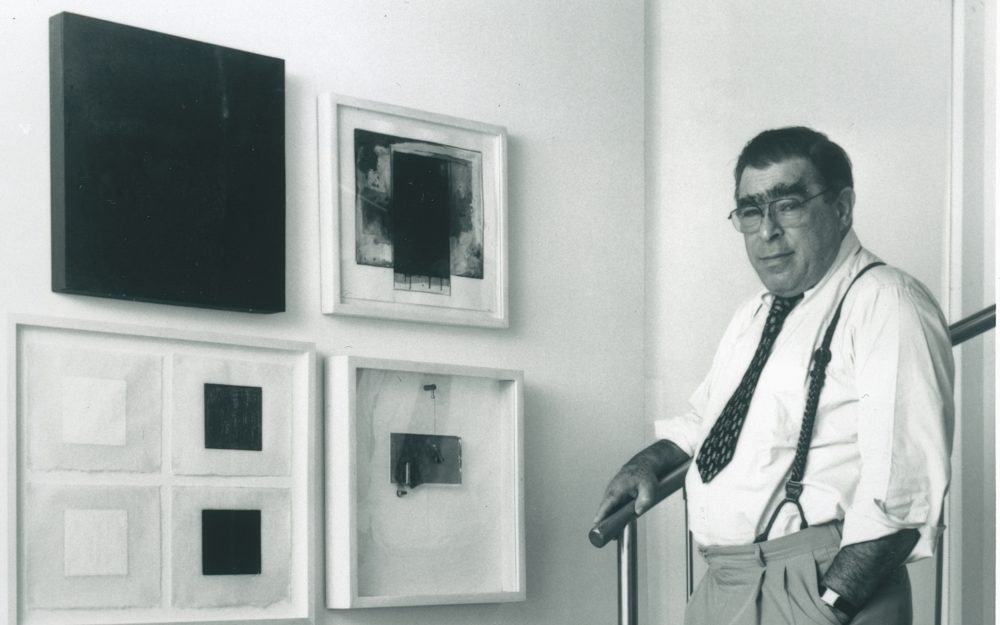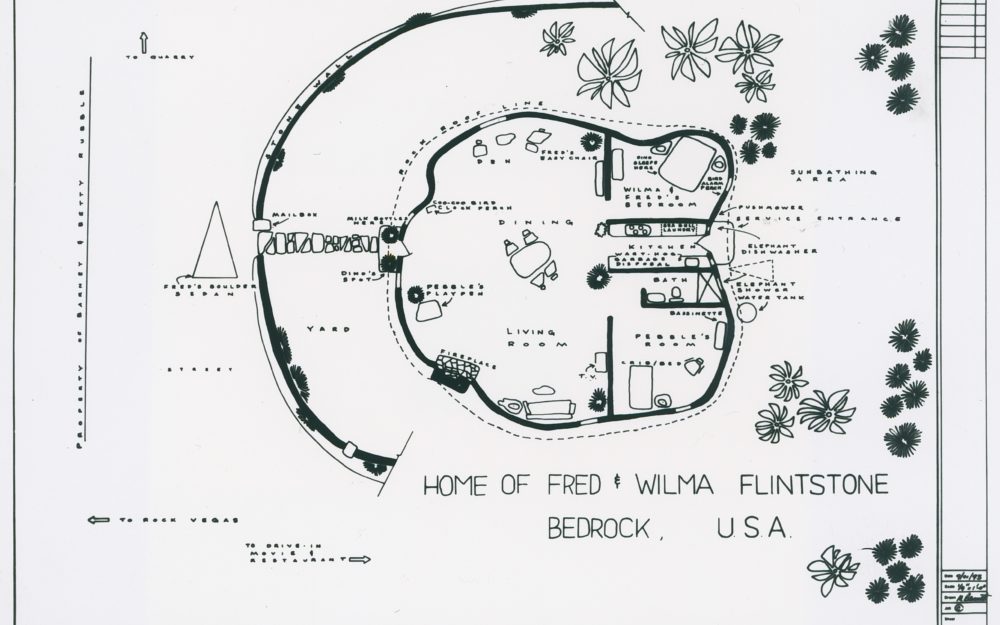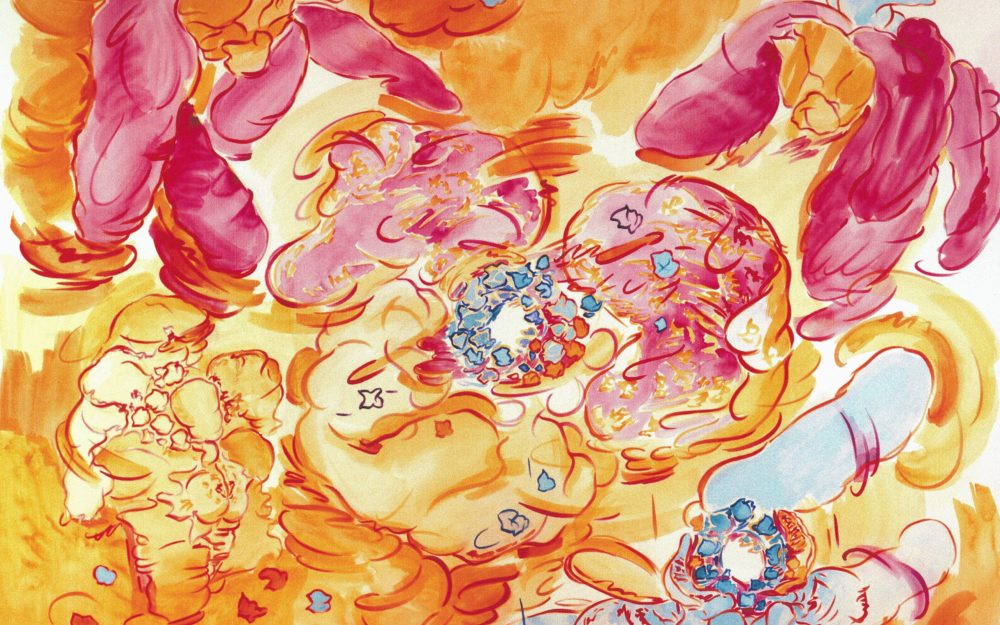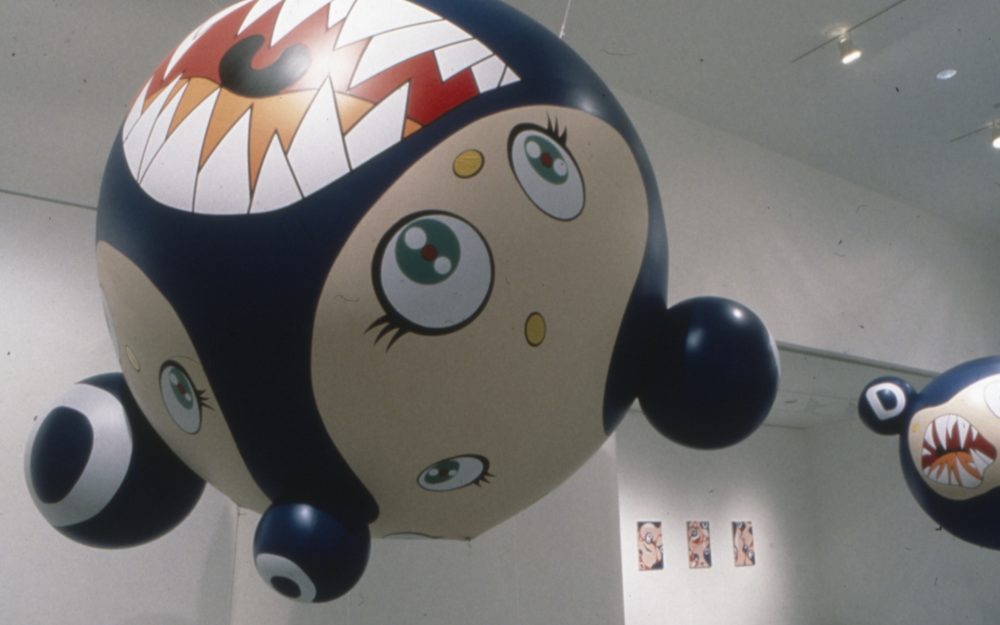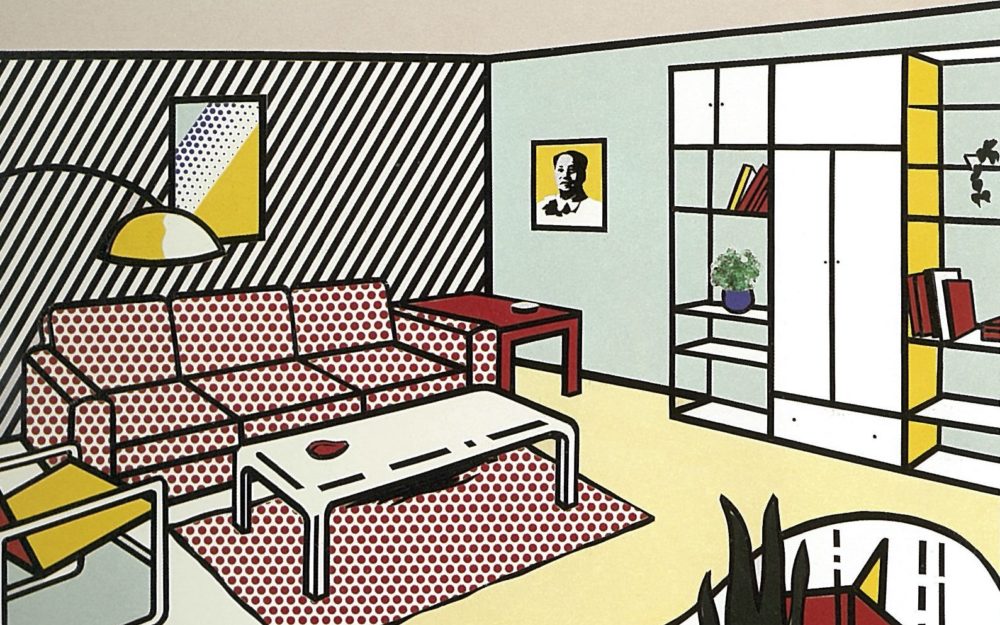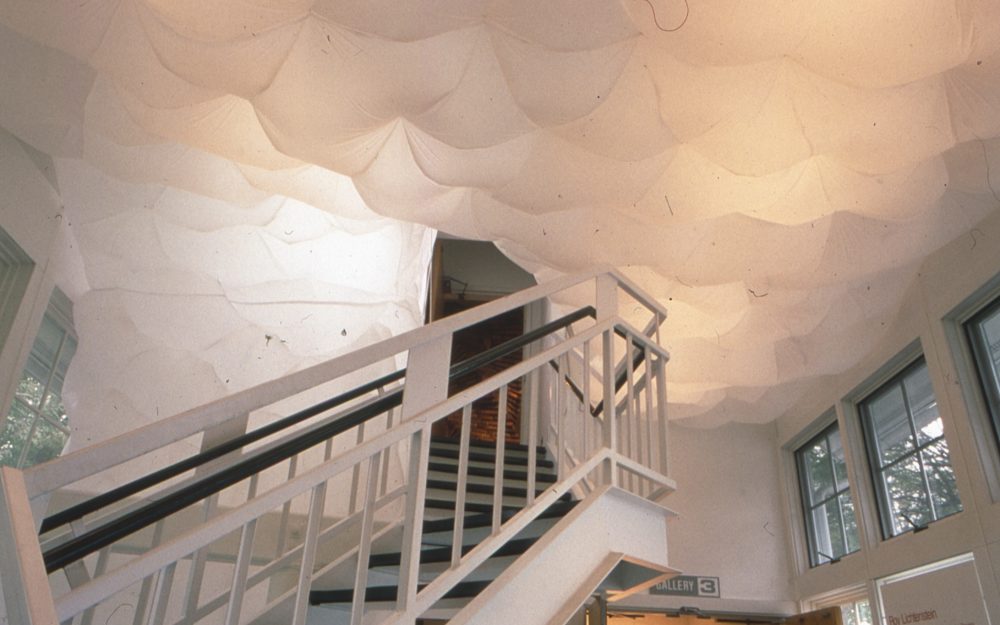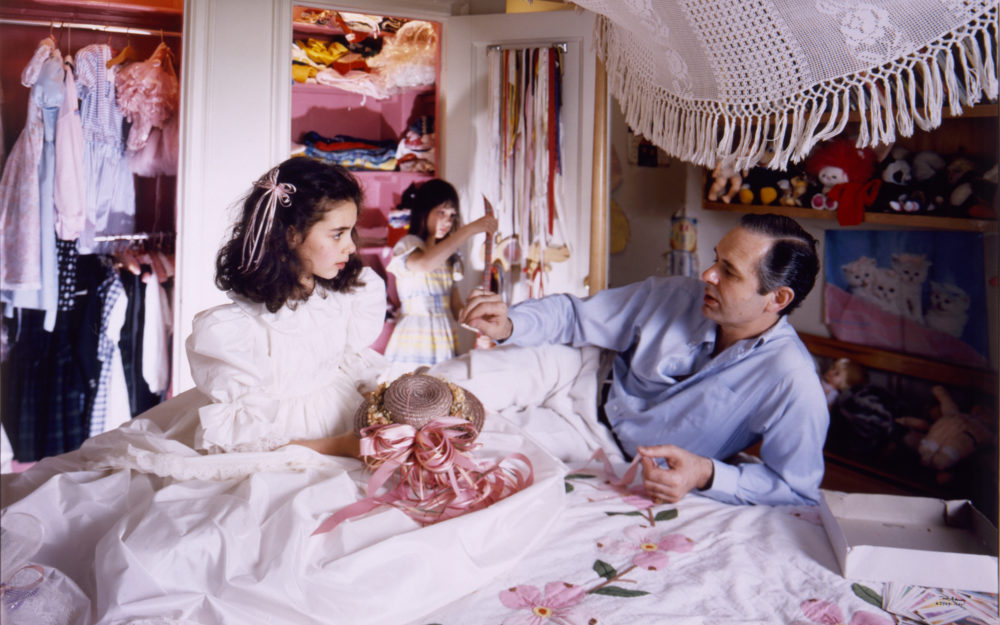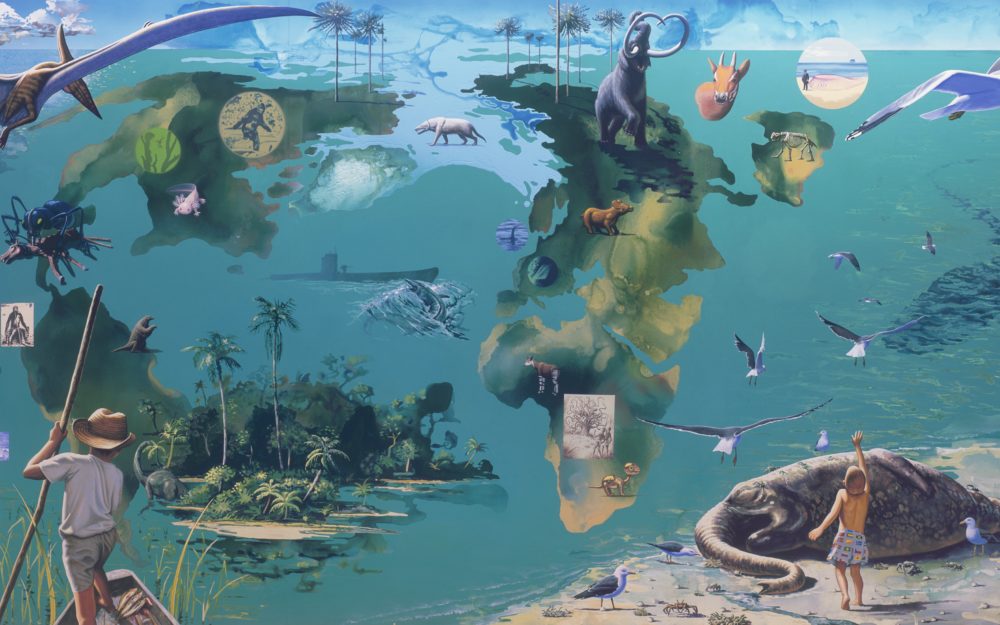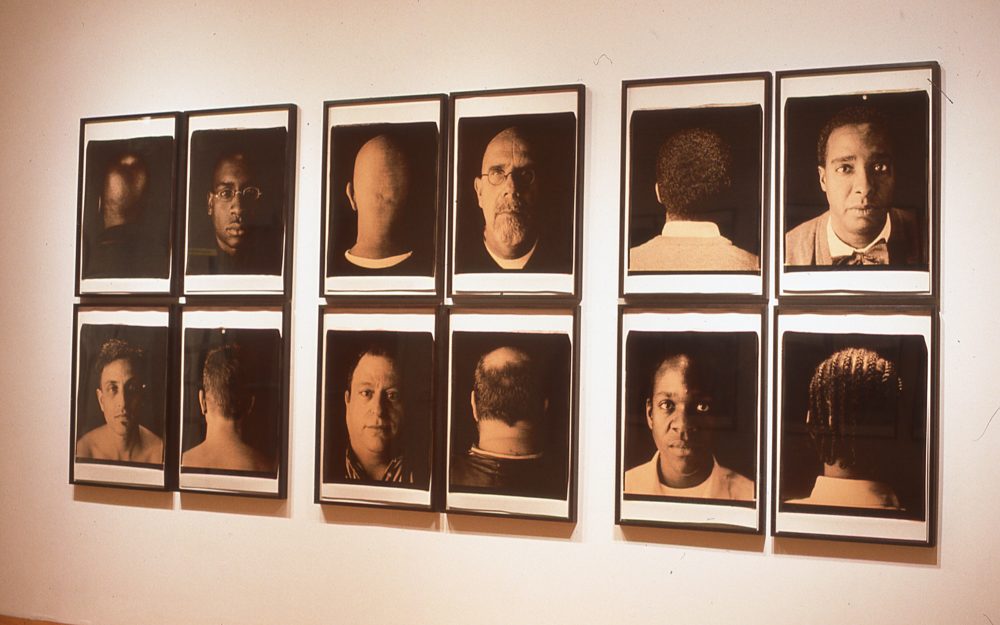- We’re open today from 12 pm to 5 pm
- Purchase tickets
- Join mailing list
- Join as a member
- Donate
Past Exhibitions
Past exhibitions from the
Chuck Close: Works on Paper from the Collection of Sherry Hope Mallin
The Aldrich Contemporary Art Museum is pleased to present Chuck Close: Works on Paper from the Collection of Sherry Hope Mallin on view from October 29, 1989, to February 25, 1990.
Project = Installation
The Aldrich Contemporary Art Museum is pleased to present Project = Installation on view from October 29, 1989, to February 25, 1990.
Selections From The Collection
The Aldrich Contemporary Art Museum is pleased to present Selections From The Collection on view from March 10, 1990, to May 27, 1990.
Abe Ajay: Dimension x 3
The Aldrich Contemporary Art Museum is pleased to present Abe Ajay: Dimension x 3 on view through March 10, 1990, to May 27, 1990.
Black and White Since 1960: Prints from the Collection of Dave and Reba Williams
The Aldrich Contemporary Art Museum is pleased to present Black and White Since 1960: Prints from the Collection of Dave and Reba Williams, on view from March 10, 1990, to May 20, 1990.
Adaptation and Negation of Socialist Realism: Contemporary Soviet Art
The Aldrich Contemporary Art Museum is pleased to present Adaptation and Negation of Socialist Realism: Contemporary Soviet Art on view from June 9, 1990, to October 7, 1990.
German Photography: Documentation and Introspection
The Aldrich Contemporary Art Museum is pleased to present German Photography: Documentation and Introspection on view from October 20, 1990, to January 6, 1991.
Language in Art
The Aldrich Contemporary Art Museum is pleased to present Language in Art on view from October 20, 1990, to January 6, 1991.
California Artists: William T. Wiley, Mike Kelley and Brad Dunning
The Aldrich Contemporary Art Museum is pleased to present California Artists: William T. Wiley, Mike Kelley and Brad Dunning on view from January 20, 1991, to May 5, 1991.
The Art of Advocacy
The Art of Advocacy reflects the changes in the political climate that started in the late 1980's and brings greater visibility to artists who previously worked at the edge of the art world.
Landscapes of Consequence: David T. Hanson, Robert Glenn Ketchum, David Maisel, and Richard Misrach
The Aldrich Contemporary Art Museum is pleased to present Landscapes of Consequence: David T. Hanson, Robert Glenn Ketchum, David Maisel, and Richard Misrach on view from May 18, 1991, to September 22, 1991.
The Loti and Victor Smorgon Collection of Contemporary Australian Art
The Aldrich Contemporary Art Museum is pleased to present The Loti and Victor Smorgon Collection of Contemporary Australian Art on view from October 6, 1991, to January 12, 1992.
Claiming: An Installation of Paintings by Stephen Bush
Claiming: An Installation of Paintings by Stephen Bush presents the work of Melbourne painter Stephen Bush that focused on the way the artist appropriates the appearance of history painting to examine contemporary social and political issues.
Ritual, Image and Spirit: Contemporary Australian Aboriginal Art
The Aldrich Contemporary Art Museum is pleased to present Ritual, Image and Spirit: Contemporary Australian Aboriginal Art, on view from October 6, 1991, to January 12, 1992.
x6 = New Directions in Multiples
x6 = New Directions in Multiples singles out six publishers with widely varying points of view. The publisher is a player in the final product and subtly affects their creation.
Quotations: The Second History of Art
The Aldrich Contemporary Art Museum is pleased to present Quotations: The Second History of Art on view from May 16, 1992, to September 20, 1992.
Four Friends: Eric Fischl, April Gornik, Bryan Hunt & Ralph Gibson
The Aldrich Contemporary Art Museum is pleased to present Four Friends: Eric Fischl, April Gornik, Bryan Hunt & Ralph Gibson on view from October 4, 1992, to January 10, 1993.
Simply Made in America
The Aldrich Contemporary Art Museum is pleased to present Simply Made in America on view from January 24, 1993, to May 2, 1993.
Impermanence: Andy Goldsworthy & Merrill Wagner
The Aldrich Contemporary Art Museum is pleased to present Impermanence: Andy Goldsworthy & Merrill Wagner on view from January 24, 1993, to May 2, 1993.
Fall from Fashion
The Aldrich Contemporary Art Museum is pleased to present Fall from Fashion on view from May 23, 1993, to September 26, 1993.
Timely and Timeless
The Aldrich Contemporary Art Museum is pleased to present Timely and Timeless on view from October 10, 1993, to January 9, 1994.
In The Lineage of Eva Hesse
The Aldrich Contemporary Art Museum is pleased to present In The Lineage of Eva Hesse on view from January 23, 1994, to May 1, 1994.
30 Years: Art in the Present Tense
The Aldrich Contemporary Art Museum is pleased to present 30 Years: Art in the Present Tense on view from May 14, 1994, to September 18, 1994.
Promising Suspects
The Aldrich Contemporary Art Museum is pleased to present Promising Suspects on view from October 2, 1994, to January 8, 1995.
Rick Shaefer: Constructed Landscapes
The Aldrich Contemporary Art Museum is pleased to present Rick Shaefer: Constructed Landscapes on view from January 22, 1995, to April 2, 1995.
Michael Mazur: The Inferno
The Aldrich Contemporary Art Museum is pleased to present Michael Mazur: The Inferno on view from January 22, 1995, to February 26, 1995.
Drawn on the Museum
The Aldrich Contemporary Art Museum is pleased to present Drawn on the Museum on view from January 22, 1995, to May 7, 1995.
Inside Out: Psychological Self-Portraiture
The Aldrich Contemporary Art Museum is pleased to present Inside Out: Psychological Self-Portraiture on view from May 20, 1995, to September 17, 1995.
Transmissions from Austria
The Aldrich Contemporary Art Museum is pleased to present Transmissions from Austria on view from June 24, 1995, to September 17, 1995.
Living with Contemporary Art
The Aldrich Contemporary Art Museum is pleased to present Living with Contemporary Art on view from October 1, 1995, to January 7, 1996.
Weir Farm Visiting Artists
The Aldrich Contemporary Art Museum is pleased to present Weir Farm Visiting Artists, on view from October 1, 1995, to December 15, 1995.
In The Flesh
The Aldrich Contemporary Art Museum is pleased to present In The Flesh, on view from January 21, 1996, to May 5, 1996.
No Doubt
The Aldrich Contemporary Art Museum is pleased to present No Doubt, on view from May 19, 1996, to September 1, 1996.
Ivan Chermayeff: Recent Collages
The Aldrich Contemporary Art Museum is pleased to present Ivan Chermayeff: Recent Collages on view from September 15, 1996, to November 3, 1996.
Landscape Reclaimed: New Approaches to an Artistic Tradition
The Aldrich Contemporary Art Museum is pleased to present Landscape Reclaimed: New Approaches to an Artistic Tradition on view from September 15, 1996, to January 5, 1997.
Beyond Narrative: Photographs of Jenny Lynn & Jill Mathis
The Aldrich Contemporary Art Museum is pleased to present Beyond Narrative: Photographs of Jenny Lynn & Jill Mathis on view from November 10, 1996, to January 5, 1997.
Making It Real
Making It Real was on view at The Aldrich Contemporary Art Museum from January 19, 1997, to April 20, 1997.
Robert Cottingham: An American Alphabet
Through form, color, and content, Robert Cottingham: An American Alphabet explores the complex relationship between symbols, objects, and their representation.
Roland Flexner: Figures & Vanitas
Flexner's work is marked by the artist's delicate and deliberate touch, and by the intellectual richness he brings to his craft.
Bruce Nauman: 1985-1996, Drawings, Prints, and Related Works
Bruce Nauman: 1985-1996, Drawings, Prints, and Related Works was on view at The Aldrich from May 4, 1997, to August 31, 1997.
Visionary Drawing: Chris Hipkiss, Howard Johnson & Peter Sparre
The Aldrich is pleased to present Visionary Drawing: Chris Hipkiss, Howard Johnson & Peter Sparre, on view from May 4, 1997, to June 25, 1997.
Weir Farm 1997 Visiting Artists
The Aldrich is pleased to present Weir Farm 1997 Visiting Artists on view from June 29, 1997, to July 20, 1997.
Aaron Birnbaum: Paintings 1960–1996
The Aldrich is pleased to present Aaron Birnbaum: Paintings 1960–1996, on view from September 14, 1997, to November 9, 1997
Best of the Season: Selected Work from 1996-97 Gallery Exhibitions
The Aldrich is pleased to present Best of the Season: Selected Work from 1996-97 Gallery Exhibitions on view from September 14, 1997, to October 31, 1997.
Eleven from The New Yorker
The Aldrich is pleased to present Eleven from The New Yorker, on view from November 16, 1997, to January 11, 1998.
Robert Gober: The 1996 Larry Aldrich Foundation Award Exhibition
The Larry Award Exhibition, Robert Gober; is a selection of the artist's work, including two of his most recent pieces which are being shown for the first time here at The Aldrich Museum. Curator Hany Philbrick worked with Robert Gober in selecting an important cross section of the artist's sculptural output.
Large-Scale Drawings from the Collection of Wynn Kramarsky
It is rare in the complex and changing world of contemporary art that one person can have an impact on an entire field. The genre of works on paper has been fortunate in finding such an individual, Wynn Kramarsky, who responds with intelligence and passion, and perhaps more importantly, support for artists working in a media that traditionally has been considered secondary in the hierarchy of art.
Mark Bennett: TV Sets and the Suburban Dream
TV Sets and The Suburban Dream illustrates Mark Bennett's cut-to-the-chase approach to American popular culture. His elaborately detailed floor plans of the homes of some of America's best-known families will bring a shock of recognition because they capture and quantify the straight line of television narrative. The artist acts as supreme editor, distilling our collective memories, hopes, and desires by isolating and highlighting the places we seek to inhabit, the things we strive to own, and the people we most admire.
YaZOO!: James Grashow
Redding artist James Grashow transformed the Museum's Leir Gallery into a zoo of wild jungle animals. Crafted from plain and corrugated cardboard and assembled with Elmer's Glue and paper packing tape, these larger-than-life size animals were arranged so that visitors could stroll throughout the gallery in the corridors between their cardboard cages. Grashow fabricated as many animals as possible to replicate the thrill and variety of an actual trip to the zoo.
Melissa Marks, The Adventures of Volitia: Heroic Burlesque
Melissa Marks has cerated a wonderful idea: a self-aware abstraction named Volitia. Not just any self-aware abstraction either, but an aesthetically promiscuous, abstract character. Marks's achievement is the vigorous, beautiful embodiment of her character on the walls of the Aldrich Museum's Erna D. Leir Gallery.
Pop Surrealism
Pop Surrealism is an exhibition of work by 73 artists whose surrealist tendencies are informed by popular culture. Both Pop art and surrealism have remained extremely influential on twentieth century art. The artists in Pop Surrealism look deep into representations of contemporary culture, mutating them with a surrealist’s eye.
Roy Lichtenstein: Prints from the Collection of John & Kimiko Powers
This exhibition is a selection of Lichtenstein’s multiple-editioned works from 1964 to 1996, chosen from the collection of John and Kimiko Powers, who have assembled one of the most significant private collections of the artist’s work. With the passing of Roy Lichtenstein in 1997, the art world lost not only one of the most significant pioneers of Pop art, but also an artist who over the last forty years has had a profound influence on the nature of contemporary printmaking.
Here: Artist’s Interventions at the Aldrich Museum
This quirky, domestic-scale building, with its hidden windows, vestigial fire-places, and scarred wooden floors is a defining characteristic of the Aldrich, exerting a subtle and pervasive influence on all the exhibition we mount. The influence usually extends only as far as the installation of an exhibition, not its content; in that case of Here: Artist's Interventions at The Aldrich Museum, the invited artists have taken great advantage of our building, exploiting its unique character in their work.
Ann Hamilton: Whitecloth, 1998 Larry Aldrich Foundation Award Exhibition
artist of exceptional merit. An independent panel selected the 1998 recipient: Ann Hamilton. Ann Hamilton’s installation whitecloth was conceived after a series of visits by the artist to The Aldrich Museum. She responded to the incongruity between the Museum’s exterior appearance.
Future-Present: Contemporary Photographs of Children from the Reader’s Digest Collection
The Aldrich Museum is privileged to have the opportunity to present Future-Present: Contemporary Photographs of Children from the Reader’s Digest Collection. The works included in this exhibition represent only a part of the vintage, modern, and contemporary photographic images of children owned by Reader’s Digest.
Alexis Rockman: A Recent History of the World
Alexis Rockman is talented, dangerous, and nuts. He’s also a diligent researcher with almost too much cerebral curiosity to be a visual artist. He reads. He consults field guides, taxonomies, old travel narratives, and serious books of conceptual science. He collects obscure facts and incorporated them (along with the bold balls, the dead seagull and rattlesnake carcasses, the women's underwear, the images quoted from pop culture and art history, and other physical and representational artifacts) into his creations.
20 x 24: Recent Portraits by Lyle Ashton Harris
20 x 24: Recent Portraits by Lyle Ashton Harris is the first major public presentation of a selection of images from the new series of unique Polaroid portraits begun by the photographer in the Fall of 1998.
The Nude in Contemporary Art
Since the very origins of art, people have been rendering the unclothed human form. Although the human form is a perennial subject for art, the cultural attitudes surrounding it perpetually change. The work of the 45 artists in this exhibition explores themes including the mundane body, the grotesque body, aging, identity, the celebration of beauty, and cultural norms and prohibitions that surround the body.
